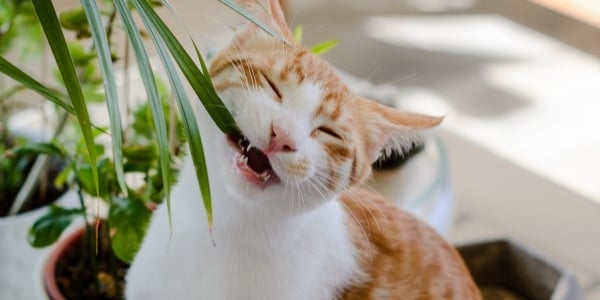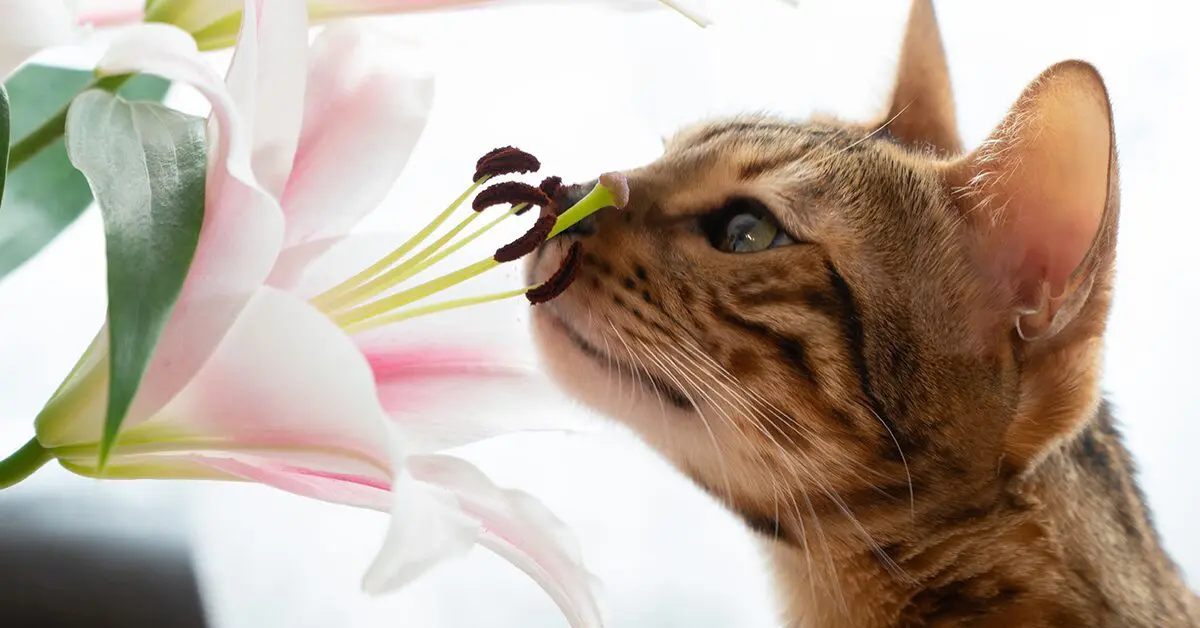Some flowers that are poisonous to cats include lilies, tulips, daffodils, and chrysanthemums. Flowers can brighten up any space and add beauty to a home, but if you have a cat, it’s important to be aware that certain types of flowers can be toxic to feline friends.
Cats are curious creatures, and they may be tempted to nibble on plants, unaware of the potential danger. To keep your beloved cat safe, it’s essential to know which flowers can be harmful to them. This article will provide crucial information about the flowers that are poisonous to cats, helping you create a pet-friendly environment while still enjoying the beauty of flowers in your home.
Read on to learn more about the potential hazards of lilies, tulips, daffodils, and chrysanthemums for cats.
Understanding The Risk: Why Knowing Which Flowers Are Poisonous Is Crucial
Understanding the risk is crucial as it helps us identify toxic flowers that can harm cats. Identifying these flowers is important to protect our feline friends. Flower poisoning in cats can lead to common symptoms such as vomiting, diarrhea, and lethargy.
Ingesting toxic flowers can pose serious risks to the health and well-being of our beloved pets. It is essential to be aware of the dangers associated with certain flowers to prevent accidental ingestion. By being vigilant and informed, we can create a safe environment for our cats and ensure their overall well-being.
So, always take the time to research and determine which flowers are safe for your feline companions.

Credit: www.preventivevet.com
Common Flowers Poisonous To Cats
Lilies, although visually stunning, are one of the most dangerous flowers for cats. Tulips, with their beauty, can pose a serious risk to feline health. Daffodils may hide a toxin that can be harmful if ingested by cats. Azaleas and Rhododendrons, despite their exquisite appearance, can be deadly to our feline friends.
The popular Sago Palm, often found indoors, should be approached with caution, as it can be dangerous to cats. Chrysanthemums, commonly seen in gardens, harbor hidden dangers that can harm cats. Contrary to popular belief, Poinsettias do not pose a serious threat to cats.
Surprisingly, even the charming Carnation can be toxic to cats. It is important for cat owners to be aware of these common flowers that can present a potential danger to their feline companions.
Pet-Safe Alternatives: Beautiful Flowers To Enjoy
Cat owners often wonder what flowers are safe for their furry friends to be around. It’s crucial to choose pet-friendly options when it comes to beautiful flowers. There are numerous safe indoor plants for cats that can bring color and vibrancy to your home without posing any harm.
These cat-friendly flower alternatives not only enhance the aesthetics of your space but also benefit your feline companion’s overall well-being. Growing pet-safe flowers ensures that your furry friend can freely explore their surroundings without the worry of toxic flowers. With a wide range of options available, you can find wonderful alternatives to toxic flowers that will brighten up your space while keeping your beloved cat safe and happy.
Taking Precautions: Protecting Your Cat From Toxic Flowers
Taking precautions to protect your cat from toxic flowers is essential. Keeping toxic flowers out of reach is crucial for their safety. Creating a safe indoor environment helps to ensure that your cat is not exposed to harmful plants. Educating yourself and others about poisonous flowers can prevent accidents.
Practicing flower safety year-round is necessary because some toxic plants may bloom in different seasons. By following these precautions, you can minimize the risk of your cat coming into contact with any dangerous flowers. Stay alert and keep your feline friend safe from harm.
What To Do If Your Cat Ingests A Toxic Flower
Ingesting toxic flowers can be harmful to cats, so it’s crucial to recognize the signs of poisoning. If your cat has ingested a toxic flower, take immediate action. Contacting your veterinarian is essential for professional guidance. They can provide advice on next steps and treatment options.
The prognosis will depend on the specific flower ingested and the timely response. It’s important to remember to keep toxic flowers out of your cat’s reach to prevent future incidents. Taking proactive measures and staying cautious can help keep your feline friend safe from harmful plants.
Frequently Asked Questions For What Flowers Are Poisonous To Cats
Are Lilies Poisonous To Cats?
Yes, lilies, specifically Easter, Tiger, Asiatic, Japanese Show, and Daylilies, are toxic to cats. Ingesting any part of these plants can cause symptoms like vomiting, lethargy, kidney failure, and even death in cats. It’s crucial to keep lilies out of reach of your feline friends.
Can Daisies Harm Cats?
Daisies belong to the Asteraceae family, which can cause gastrointestinal issues and skin irritations in cats if ingested. While daisies may not be as toxic as other flowers, it’s still advisable to keep them away from your furry companions to prevent any potential health problems.
Are Roses Safe For Cats?
Yes, roses are non-toxic to cats. However, it’s still necessary to take caution and prevent your feline friend from chewing on rose thorns, as they can cause injury or infections. Be sure to keep an eye on your cat when you have roses around, ensuring their safety while enjoying the beauty of these flowers.
Conclusion
To wrap up, it is essential to be aware of the flowers that are toxic to our feline friends. While many flowers may add beauty to our homes and gardens, they can pose serious health risks to cats if ingested.
Flowers like lilies, tulips, daffodils, and azaleas are particularly dangerous, as they can cause vomiting, diarrhea, stomach pain, and even kidney failure in cats. As responsible pet owners, it is crucial to keep these plants out of our cats’ reach or opt for cat-friendly alternatives.
An excellent way to ensure the safety of our pets is to educate ourselves about the potential dangers associated with certain flowers and take necessary precautions. By doing so, we can create a safe and flourishing environment for our beloved feline companions.



